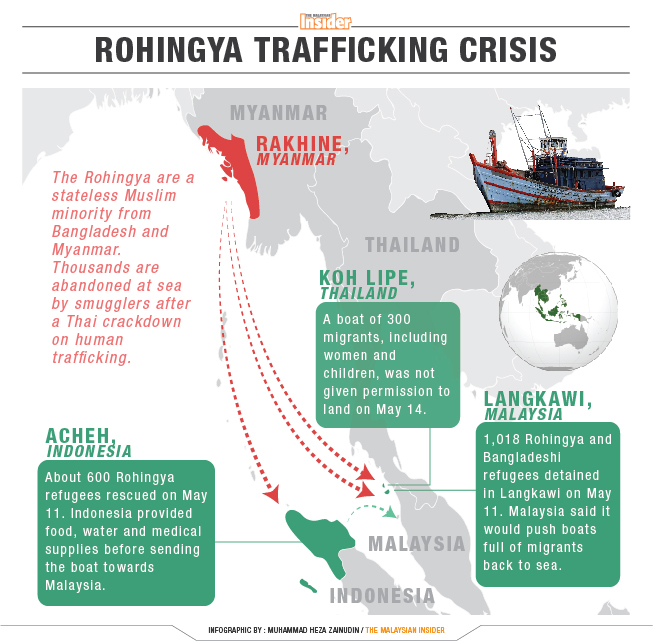Rohingyas-The Hapless Community
:sandeepan
In News:
In October 2016, Myanmar soldiers went to Rakhine and killed over 130 Rohingyas and torched dozens of the villages on the basis of suspicion of Rohingya insurgents killing the Burmese policemen.
As per UN, about 30,000 Rohingyas have been displaced by the ongoing violence in Rakhine.
As a result, Myanmar called for a special meeting with Foreign Ministers of ASEAN recently as a response to protests in East and South Asia and beyond over the deteriorating Rohingya situation in Rakhine.

Historical Aspect
Rohingya, a heavily-persecuted ethnic Muslim minority of around one million people live in Rakhine, a restive state in Western Myanmar.
The Myanmar government has forcibly segregated Rohingya from the rest of the population in Rakhine state since 1982 when the government stripped them of their citizenship.
The 1982 Burma citizenship law excluded the Rohingya from a list of 135 officially recognized ethnic groups as the government insists that Rohingyas are illegal immigrants from neighbouring Bangladesh and have no history in the country.
The Rohingya face long-standing ethnic and religious tensions with the Buddhist majority in Rakhine State, which views them as unwanted interlopers.
Since decades they are living in ghetto-like enclaves, from which they aren’t allowed to leave. They have very limited access to basic services and viable livelihood opportunities due to strict movement restrictions.
The U.S. State Department’s latest human rights report states that more than 100,000 Rohingya have fled Rakhine State since 2012. This exodus is “facilitated by [Myanmar] military and security forces and criminal smugglers and traffickers,” who subject the migrants to further abuse and exploitation.
Present Status
The crisis shows that people facing persecution will flee borders, regardless of exogenous factors. This is most certainly true for the Rohingyas.
Around 30000 Rohingyas have been displaced internally and thousands have tried to flee to neighbouring countries, especially Bangladesh, through perilous routes.
During the European migration crisis, the leaders of the European Union have proactively debated and responded somewhat positively to finding a humane solution to it, even though the problem still persists.
Contrary to this, the emerging leaders in Asia such as China and India have remained mostly passive on the long-standing Rohingya refugee crisis as it has direct geopolitical implications on it.
China and India share a border with Myanmar and have vested economic interests in the country owing to trade and investment ties.
India’s Stand (with Myanmar inclusion)
India has been trying to build a strong relationship with Myanmar in recent years, both on the economic and strategic fronts, by seeking to enhance connectivity through the Northeastern States.
In addition, India has also been assisting Myanmar with capacity building in areas such as English language training and Information Technology.
Under the Indian Technical and Economic Cooperation Programme, 500 slots have been reserved for Myanmar nationals with the goal of strengthening human resource capacity.
This clearly shows that India would like to play a constructive role in Mynamar’s transition to a robust democracy.
India’s relation with Myanmar are recently taking an upward turn. When the military took over the Myanmar leadership, India suspended its relations with the neighbouring country. This is when China made inroads into Myanmar.
India has played a constructive role in other crises such as the Yemen civil war and the Nepal earthquake. But, India has been silent in the context of the Rohingya crisis.
As Indian leadership has highlighted in the UNGA- that ‘Vasudhaiva Katumbakam’ — the whole world is one family — is India’s philosophy, India can take certain steps with respect to Rohingyas
It can contribute to the rescue efforts of the International Organization for Migration, which has already collected $I million for rescue efforts.
It can express displeasure against the atrocities on the Rohingya community, especially since it believes in democracy, liberalism and pluralism.
An unstable Myanmar is likely to have strong security implications for India. Hence, India needs to assure that its eastern neighbourhood is secured.
India has supported the Hindu minorities from Bangladesh and Pakistan. Even during the 1971 war, India provided shelter to millions of East Pakistani refugees. At the end of war, there was one of the most orderly and peaceful return of refugees to their land from India.
India can play a constructive role in maintaining the security stability in the region as the persecuted Rohingya Muslims are likely to provide fertile recruiting grounds for extremist groups.
Hence there should also be similar approach of India towards Rohingyas and project itself as a regional leader who rises above narrow economic and geopolitical interests and take a stance consistent with the moral and spiritual values with which it is identified.
To Conclude:
India has welcomed Rohingyas as long as they obtain a valid visa and have a refugee card. Without a refugee card, the Rohingyas can’t claim land, health benefits or education for their kids. According to a Reuters report, only 9000 of the 36,000 Rohingyas who live in India are registered. Thus, though in principle, all refugees in India have access to government health and education services, many Rohingyas struggle for these as they don’t have an official refugee status.
Considering India’s most mature democracy in Asia with much-touted pluralistic and secular ideologies, India should respond on humanitarian grounds to not allow the security and economic implications for the region spiral out of control.



http://allocating.one